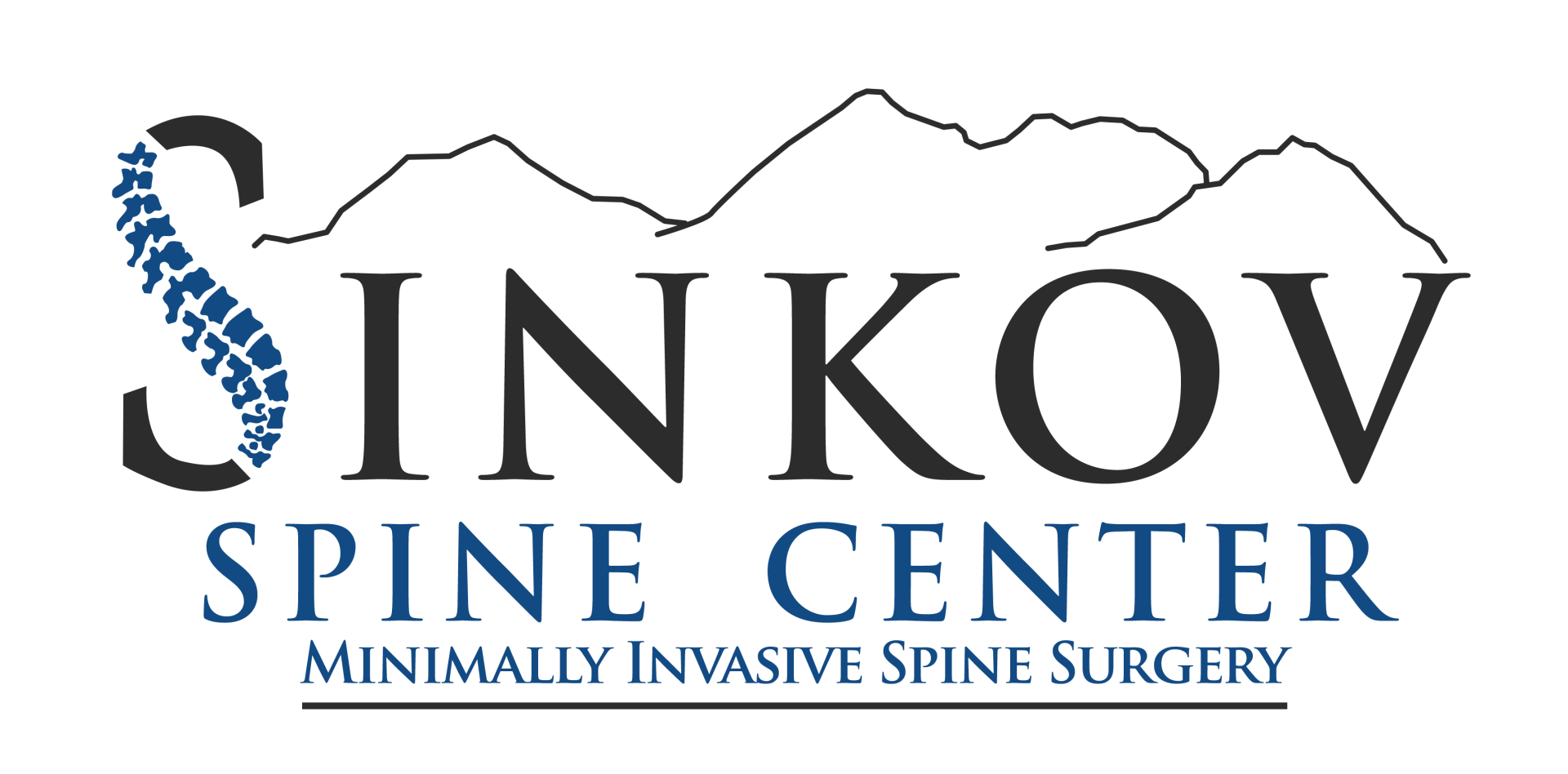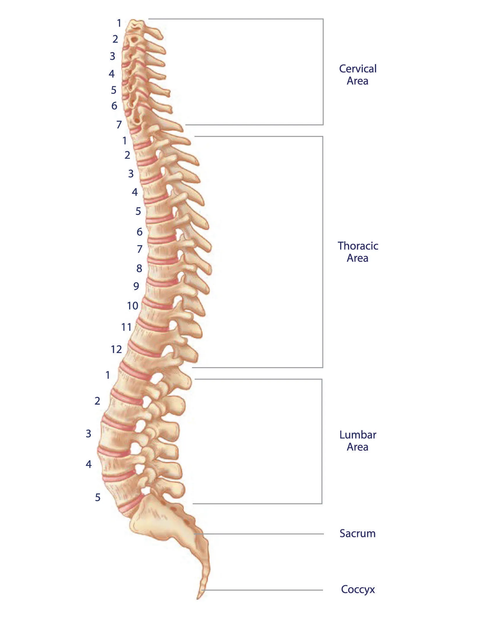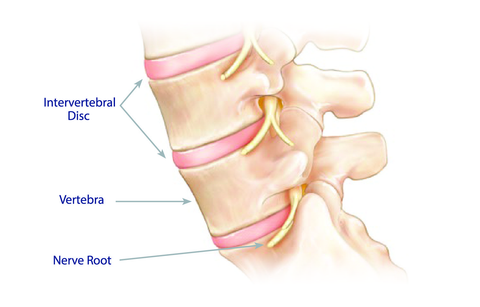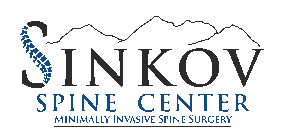CONDITIONS
FIND THE ROOT OF YOUR BACK PAIN
SPINE CONDITIONSWe Diagnose & Treat
Cervical Region
- Cervical Stenosis
- Cervical Radiculopathy
- Cervical Disc Herniation
- Cervical Spondylosis
- Cervical Degenerative Disc Disease
- Cervical Spondylolisthesis
- Cervical Myelopathy
Lumbar Region
- Lumbar Stenosis
- Lumbar Radiculopathy
- Lumbar Disc Herniation
- Lumbar Spondylolisthesis
- Lumbar Degenerative Disc Disease
- Lumbar Spondylosis
General Spine
- Scoliosis
- Muscle Strain/Spasm
- Sacroiliac Joint Pain
SPINE CONDITIONSWe Diagnose & Treat
General Spine
- Scoliosis
- Muscle Strain/Spasm
- Sacroiliac Joint Pain
Cervical Region
- Cervical Stenosis
- Cervical Radiculopathy
- Cervical Disc Herniation
- Cervical Spondylosis
- Cervical Degenerative Disc Disease
- Cervical Spondylolisthesis
- Cervical Myelopathy
Lumbar Region
- Lumbar Stenosis
- Lumbar Radiculopathy
- Lumbar Disc Herniation
- Lumbar Spondylolisthesis
- Lumbar Degenerative Disc Disease
- Lumbar Spondylosis
ABOUT THE SPINEBuilding Blocks of the Backbone
LEARN MORE ABOUT YOUR CONDITION
GENERAL SPINE CONDITIONS
- Scoliosis
What is it?
Scoliosis is an abnormal curvature of the spine.
What causes it?
It can be present from birth (congenital), develop during teenage years, or develop later in life due to arthritis or trauma.
What happens?
If the abnormal curvature is small enough, it may never cause any pain and a person can live a normal, physical, and productive life. Sometimes the curve becomes large enough that it causes pain. The pain primarily comes from overworked muscles as they work harder than normal (because of the excessive curvature of the spine) to keep the body upright.
What are the treatment options?
Physical therapy aimed to strengthen and improve endurance in the core muscles around the spine typically helps this pain. If the curve is so large that it causes disruption in day-to-day function or if physical therapy does not help, surgery to correct the curve is sometimes recommended. It is an extensive surgery with a significant chance of complications and long recovery. This is because a large portion of the spine would have to be straightened back to normal and then held in that new position with internal hardware.
- Muscle Strain/Muscle Spasms
What is it?
Multiple muscles surround our spine stabilizing it and allowing us to move our bodies. A muscle strain is a partial tear of fibers within those muscles.
Muscle spasm is a prolonged muscle contraction (like a cramp).
What causes it?
Injury to the body such as a fall or a car accident can stretch spine muscles beyond their normal limit or cause them to contract forcefully.
What happens?
Muscle strain can cause significant pain and swelling as a result of spine muscles being stretched beyond their normal limits.
Muscle spasm can cause the muscle to hurt and become very stiff. Often the pain starts at the origin and insertion of the muscle on the bone.
When neck muscles go into spasms, patients often get headaches on the back of the head – where those muscles attach to the skull.
When lower back muscles go into spasm, patients often get pain at the top of the pelvis (upper buttocks) where the paraspinal muscles attach to the pelvis.
What are the treatment options?
Typically, symptoms of muscle strain and muscle spasm improve within days to weeks, but in severe cases can last much longer.
Muscle strain is managed with medications, acupuncture, chiropractic treatment, or physical therapy. The idea behind this is to treat the pain and stiffness while waiting for the muscle tears to heal.
Muscle spasm is typically treated by heat packs, stretching, strengthening exercises, massage, chiropractic manipulations, or acupuncture. In severe cases patients may use anti-inflammatory medications, muscle relaxant medications, or trigger point injections.
There is no surgery that can help muscle strain or spasm. The symptoms typically resolve faster if the injury is treated properly and if the patient starts moving as soon as they can tolerate it. Using a brace and prolonged rest or inactivity typically do not help and can cause the symptoms to last longer.
- Sacroiliac Joint Pain
What is it?
The sacroiliac joints are located in upper buttocks on each side of the body. They connect the lowest portion of the spine (sacrum) to the pelvis (ilium). These joints transmit the weight of the body from the legs and pelvis to the spine. These joints are very stable and normally only move 2-4 degrees.
What causes it?
The sacroiliac joint can get damaged by trauma (such as direct fall onto buttocks or heavy lifting), due to pregnancy, or chronic overuse. It can also become painful with certain forms of autoimmune arthritis.
What happens?
The symptoms of sacroiliac joint pain include low back pain, buttock pain, pain with sitting, and pain with walking. Sometimes this pain can radiate down the thigh and into the leg.
Sacroiliac joint pain can be diagnosed by an experienced clinician. Imaging studies such as MRI, CT scan, or x-rays frequently look normal even if the joint is very painful.
What are the treatment options?
Treatment includes physical therapy to strengthen the surrounding muscles and stabilize the joint. Activity modifications and anti-inflammatory medications can also help. If the pain persists, a sacroiliac steroid injection can be done to help the pain. Because the joint is so deep and complex, the injection is typically done using x-rays by an experienced radiologist or a pain management doctor.
In some cases, the pain will persist despite these treatments and can significantly affect your quality of life and ability to stay active. In these cases, a minimally invasive fusion operation can permanently relieve the pain with a high success rate and quick recovery.
CERVICAL CONDITIONS
- Cervical Stenosis
What is it?
Cervical stenosis is the narrowing of the spinal canal. Spinal canal is the space occupied by the nerves and the spinal cord.
What causes it?
Cervical stenosis is most commonly caused by a bulging or herniated disc which protrudes into the spinal canal instead of staying between the vertebrae where it belongs. It is also be caused by overgrowth of arthritic tissues. On rare occasions, stenosis could occur due to a tumor, bleeding, or severe trauma to the neck.
What happens?
When the space gets narrow, the cervical nerve roots and/or the spinal cord get compressed. This affects how they function and causes various symptoms. These can include pain in the neck and shooting or aching pain in the arms, and numbness or tingling. The final and most severe symptoms of nerve compression are muscle weakness and possible muscle wasting.
What are the treatment options?
There are many treatment options for cervical stenosis. The one that would be recommended for you depends on many factors including the severity or duration of symptoms and what type of treatments have already been done in the past. The treatments may include physical therapy, medications, injections, and surgery.
- Cervical Radiculopathy
What is it?
Cervical radiculopathy is the irritation of cervical nerve roots.
What causes it?
Cervical radiculopathy is usually caused by compression from cervical stenosis (see description for cervical stenosis).
What happens?
The most common symptom of cervical radiculopathy is shooting pain into one or both arms. Other symptoms include numbness, tingling, and muscle weakness.
What are the treatment options?
There are many treatment options for cervical stenosis. The one that would be recommended for you depends on many factors including the severity or duration of symptoms and what type of treatments have already been done in the past. The treatments may include physical therapy, medications, injections, and surgery.
- Cervical Disc Herniation
What is it?
The vertebrae in the spine are connected by discs. These discs provide the spine with flexibility. A spinal disc is not a uniform structure. It has a tough outer covering and a soft inner portion. The outer covering holds the vertebral bones together and contains the soft inner portion. The soft inner portion serves as a cushion.
Disc herniation is the protrusion of the soft portion of the disc through the outer covering into the spinal canal (like jelly out a doughnut).
What causes it?
The disc can herniate because of severe trauma, recurrent injury, or degeneration (wear and tear) that slowly weakens the outer portion.
What happens?
When the disc herniates out (like jelly out of a donut) it can compress the nerves and the spinal cord. If the disc tissue gets close enough to the nerves, it can chemically irritate them even if they are not physically compressed. Spinal nerve root compression or irritation can cause significant symptoms including arm pain, numbness, and weakness. If the spinal cord itself is compressed, it can lead to a more serious condition called cervical myelopathy (see description).
What are the treatment options?
There are many treatment options for cervical stenosis. The one that would be recommended for you depends on many factors including the severity or duration of symptoms and what type of treatments have already been done in the past. The treatments may include physical therapy, medications, injections, and surgery.
- Cervical Spondylosis
What is it?
The vertebra in your spine are connected by discs in the front and small facet joints in the back. Because the spine moves, the discs and the joints eventually start wearing out. The process of “wear and tear” (degenerative osteoarthritis) of the disc and facet joints in the spine is called Spondylosis.
What causes it?
Cervical spondylosis is caused by normal wear and tear. Degeneration may start earlier than expected if a patient smokes, is subjected to trauma to the facet joints or if history of spine degeneration runs in their family. Additionally, certain diseases and medications can cause early degeneration.
What happens?
As the joints degenerate, the spine may become less flexible and any motion of the spine may cause pain. An arthritic spine is also more prone to injury. A patient with already degenerative spine will have more pain with sprain or strain and the symptoms will last longer. As with any other arthritic joints, spondylosis may cause overgrowth of bone spurs and arthritic soft tissue. Such bone spurs can compress the nerves causing cervical radiculopathy (see description).
Patients with cervical spondylosis typically experience neck stiffness and pain when moving the neck up and down and side to side.
What are the treatment options?
There are many treatment options for cervical stenosis. The one that would be recommended for you depends on many factors including the severity or duration of symptoms and what type of treatments have already been done in the past. The treatments may include physical therapy, medications, injections, and surgery.
- Cervical Degenerative Disc Disease
What is it?
The vertebrae in your spine are connected by discs in the front and small facet joints in the back. Because the spine moves, the discs and the joints eventually start wearing out. The process of “wear and tear” (degenerative osteoarthritis) of the disc is called Degenerative Disc Disease.
What causes it?
Cervical Degenerative Disc Disease is caused by normal wear and tear. The degeneration may start earlier than expected if a patient smokes, if their discs are subjected to trauma, or if there is a history of spine degeneration in their family. Certain diseases and medications can also cause early disc degeneration.
What happens?
As the discs degenerate, they first lose water content, becoming stiffer. Next the discs lose their height and the vertebral bones get closer together. Clinically, the spine may become less flexible and motion may cause pain. An arthritic spine is also more prone to injury. A patient who already has degenerative spine will have more pain with sprain or strain and the symptoms will last longer. As with any other arthritic joints, disc degeneration may cause overgrowth of bone spurs, which in-turn can compress nerves causing cervical radiculopathy (see description).
Patients with cervical degenerative disc disease typically experience neck stiffness and pain when moving the neck up and down and side to side.
What are the treatment options?
There are many treatment options for cervical stenosis. The one that would be recommended for you depends on many factors including the severity or duration of symptoms and what type of treatments have already been done in the past. The treatments may include physical therapy, medications, injections, and surgery.
- Cervical Spondylolisthesis
What is it?
Spondylolisthesis means excessive back and forth motion (slippage) of one vertebra over another. It can cause significant neck pain, as well as clicking and grinding sensations.
What causes it?
Spondylolisthesis is typically caused by wear and tear of the facet joints that connect vertebrae in the back of the spine.
What happens?
The facet joints (together with the disc) hold the vertebrae together to create the spinal column. These joints should allow the vertebrae to flex and extend but prevent them from shifting back and forth. Chronic wear and tear can cause arthritis in these joints. As a result of the arthritis and chronic inflammation, the facet joint can become loose and allow for more shifting back and forth motion of the vertebrae. This motion can cause pain in the neck and can pinch nerves causing arm pain, weakness, and numbness.
What are the treatment options?
Treatment for spondylolisthesis typically begins with physical therapy and anti-inflammatory medications. Steroid injections and radiofrequency ablation can be done to manage the pain. Ultimately, surgery may be needed to fuse the vertebrae together and stop the abnormal motion and pain.
- Cervical Myelopathy
What is it?
Cervical myelopathy is a serious condition. It usually happens when there is a severe compression of the spinal cord. The spinal cord originates from the brain stem and is the “main cable” connecting the brain to the rest of the body.
What causes it?
Anything that severely compresses the spinal cord can cause cervical myelopathy. The most common reason is a large cervical disc herniation (see description). Other causes include large bone spurs due to arthritis, severe trauma to the neck, infection, bleeding, or tumor.
What happens?
If the spinal cord gets compressed hard enough, it will cause a disruption in signal transmission. This can result in arm and leg pain, weakness, and numbness. It typically causes problems with balance and muscle coordination, including fine finger control needed for proper handwriting, typing, buttoning buttons, etc. In severe cases, cervical myelopathy can cause bowel and bladder control problems (retention or incontinence).
What are the treatment options?
The spinal cord is extremely delicate and sensitive to pressure. Once it is compressed hard enough to cause symptoms, the problem typically will not go away without surgery.
Surgery needs to be done as soon as possible to get the pressure off the spinal cord. The longer it is delayed, the higher the risk of permanent neurologic damage and/or disability.
LUMBAR CONDITIONS
- Lumbar Stenosis
What is it?
Lumbar stenosis means a narrowing of the space for the nerves in the lower back (lumbar spine).
What causes it?
Lumbar stenosis is most commonly caused by a bulging or herniated disc that protrudes into the spinal canal instead of staying between the vertebrae, where it belongs. It can also be caused by overgrowth of arthritic tissues and bone spurs in the lumbar spine. More rarely, stenosis could be due to a tumor, bleeding, or severe trauma to the low back.
What happens?
When the spinal canal space gets narrow, the lumbar nerve roots can be compressed, which affects how they function and causes symptoms. Nerve compression can cause pain in the lower back and buttocks as well as shooting or aching pain in the legs and feet. It can also cause numbness or tingling. Severe nerve compression can cause muscle weakness and possible muscle wasting.
What are the treatment options?
There are many treatment options for lumbar stenosis. The type of treatment recommended by your doctor would depend on many factors including the severity and duration of symptoms and what type of treatments have already been done in the past. The treatments may include home exercises, chiropractic treatment, physical therapy, medications, steroid injections, and decompression surgery.
In rare cases, the nerves that control bowel and bladder function could also get compressed, causing incontinence. This is called “cauda equina syndrome” and will need to be treated with surgery as soon as possible.
- Lumbar Radiculopathy
What is it?
Lumbar radiculopathy is irritation of the lower back (lumbar) nerve roots.
What causes it?
Lumbar radiculopathy is usually due to a compression of the nerves from lumbar stenosis (see description) or lumbar disc herniation (see description).
What happens?
The most common symptom of lumbar radiculopathy is shooting pain into one or both legs and feet. Other symptoms include numbness, tingling, and muscle weakness.
What are the treatment options?
There are many treatment options for cervical stenosis. The one that would be recommended for you depends on many factors including the severity or duration of symptoms and what type of treatments have already been done in the past. The treatments may include physical therapy, medications, injections, and surgery.
- Lumbar Disc Herniation
What is it?
The vertebrae in the spine are connected by discs. The discs provide flexibility to the spine. The spinal disc is not a uniform structure. It has a tough outer covering with a soft inner portion. The outer covering holds the vertebral bones together and contains the soft inner portion which serves as a cushion.
Disc herniation is the protrusion of the soft portion of the disc through the outer covering into the spinal canal (like jelly out of a doughnut).
What causes it?
Trauma, injury, or degeneration can weaken the walls of the outer covering of the spinal disc.
What happens?
If the inner portion of the disk herniates, it can physically compress and chemically irritate the nerves causing lumbar radiculopathy (see description).
What are the treatment options?
There are many treatment options for cervical stenosis. The one that would be recommended for you depends on many factors including the severity or duration of symptoms and what type of treatments have already been done in the past. The treatments may include physical therapy, medications, injections, and surgery.
- Lumbar Spondylolisthesis
What is it?
Spondylolisthesis means excessive back and forth motion (or slippage) of one vertebra over another.
What causes it?
Lumber spondylolisthesis is typically caused by wear and tear of the facet joints that connect vertebrae in the back of the spine.
The facet joints (together with the disc) hold the vertebrae together to create the spinal column. These joints should allow the vertebrae to flex and extend but prevent them from shifting back and forth. Chronic wear and tear can cause arthritis in those joints. As a result of the arthritis and chronic inflammation, the facet joint can become loose and allow for more shifting back and forth motion of vertebrae. This motion can cause pain in the low back and can pinch nerves causing leg and foot pain, weakness, and numbness.
What happens?
Lumbar spondylolisthesis can cause significant back pain as well as a clicking and grinding sensation.
What are the treatment options?
Treatment for spondylolisthesis typically begins with physical therapy and anti-inflammatory medications. Steroid injections and radiofrequency ablation can be done to manage the pain. Ultimately, surgery may be needed to fuse the vertebrae together and stop the abnormal motion and pain.
- Lumbar Degenerative Disc Disease
What is it?
The vertebrae in your spine are connected together by discs in the front and small facet joints in the back. Because the spine moves, the disc and the joints eventually start wearing out. The process of “wear and tear” (degenerative osteoarthritis) of the disc is called Degenerative Disc Disease.
What causes it?
Lumbar degenerative Disk Disease is caused by normal wear and tear. The degeneration may start earlier than expected if a patient smokes, if their discs are subjected to trauma, or if there is a history of spine degeneration in their family. Certain diseases and medications can also cause early disc degeneration.
What happens?
As the discs degenerate, they first lose water content, becoming stiffer. Later on the discs lose their height and the vertebral bones get closer together. Clinically, the spine may become less flexible and motion may cause pain. An arthritic spine is also more prone to injury. A patient who already has degenerative spine will have more pain with any sprain or strain and the symptoms will last longer. As with any other arthritic joints, disc degeneration may cause overgrowth of bone spurs, which can in-turn compress nerves causing lumbar radiculopathy (see description).
Patients with lumbar degenerative disc disease typically experience low back stiffness and pain with motion (especially with bending forward and turning from side to side).
What are the treatment options?
There are many treatment options for cervical stenosis. The one that would be recommended for you depends on many factors including the severity or duration of symptoms and what type of treatments have already been done in the past. The treatments may include physical therapy, medications, injections, and surgery.
- Lumbar Spondylosis
What is it?
The vertebrae in your spine are connected by discs in the front and small facet joints in the back. As the spine moves, the discs and the joints will eventually start wearing out. The process of “wear and tear” (degenerative osteoarthritis) of the disc and facet joints in the spine is called Spondylosis.
What causes it?
Lumbar spondylosis is caused by normal wear and tear. The degeneration may start earlier than expected if a patient smokes, is subjected to trauma to their facet joints, or if a history of spine degeneration runs in their family. Additionally, certain diseases and medications can cause early degeneration.
What happens?
As the joints degenerate, the spine may become less flexible and any motion may cause pain. An Arthritic spine is also more prone to injury. A patient who already has degenerative spine will have more pain with any sprain or strain and the symptoms will last longer. As with any other arthritic joints, spondylosis may cause overgrowth of bone spurs and arthritic soft tissue, which can in-turn compress nerves causing lumbar radiculopathy (see description).
Patients with lumbar spondylosis typically experience low back stiffness and pain with motion (especially when bending backwards and turning from side to side).
What are the treatment options?
There are many treatment options for cervical stenosis. The one that would be recommended for you depends on many factors including the severity or duration of symptoms and what type of treatments have already been done in the past. The treatments may include physical therapy, medications, injections, and surgery.



